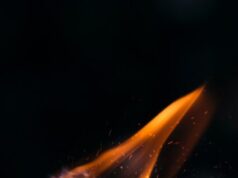Theoretical possibility of the coexistence of dual liquid states of matter in sub-zero water due to the origami-like stacking behaviour of microscale moleculesy
Did you know that water can still remain liquid below zero degrees Celsius? It is called supercooled water and is present in refrigerators. At even smaller temperatures, supercooled water could exist as a cocktail of two distinct liquids. Unfortunately, the presence of ice often prevents us from observing this phenomenon. So physicists had the idea of replicating the tetrahedral shape of water molecules — using DNA as a scaffold to create tetrahedral molecules — and thus removing the interference of ice formation.
This approach allowed Simone Ciarella from the University of Rome, Italy, and his colleagues to confirm that, in theory, a dual liquid phase is possible in sub-zero water and any other liquids made of tetrahedral molecules. These results have been published in EPJ E. It is a great tale of how the underlying microscopic shape determines the overall macroscopic form.
The DNA origami technique is a kind of nanotech version of playing with Legos, assembling building blocks to create shapes at will. However, it is rather difficult to do it experimentally. The authors instead opted to use simulation to test how tetrahedral molecules — where the arms of the tetrahedron are composed of six hard cylinders — stack up and evolve over time.
Find your dream job in the space industry. Check our Space Job Board »
The authors confirmed previously published ideas suggesting that it is the structure of the monomers and their network which makes it theoretically possible to have a dual liquid phase: one with high-density and one with low-density liquid. This is because the resulting lattice is sufficiently empty to allow for partial interpenetration of molecules. And it is sufficiently flexible to avoid crystallisation into ice, at least on the numerical time scale used in the study.
Then, Ciarella and his colleagues studied the tetrahedral molecules themselves with a recently introduced technique, called Successive Umbrella Sampling, to calculate information related to thermodynamics.
Source: Springer
Research References:










